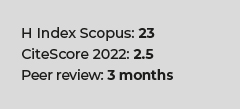Concordance of the assessment of pubertal development with the tanner scale between adolescents and a trained physician
DOI:
https://doi.org/10.17843/rpmesp.2019.363.4099Keywords:
Growth and development, Adolescent, Self report, Child development, PubertyAbstract
Objectives. To assess the concordance between self-assessment of pubertal development with the Tanner scale performed by adolescents compared to the assessment performed by a trained physician. Materials and Methods. As part of the SIMAC project, data was collected on 244 adolescents. At baseline, we included an anthropometric and pubertal development assessment, with a self-assessment by the participants. Results. We included 229 teenagers from 12 to 17 years old. The agreement between the self-assessment and the clinical evaluation with the Tanner scale presented an 88.3% agreement and a weighted kappa coefficient of 0.554. The self-assessment in women showed a good agreement ( kappaweighted=0.653) and in men a moderate agreement (kappaweighted=0.464). The only variable with a significant influence on the agreement ability was gender; the disagreement probability in males was 63% greater than in females, regardless of age, height, or weight (95% CI: 1,18-2, 26). Conclusions. Self-assessment was not accurate enough to replace medical examination, especially in males. More research is needed on this subject considering the impact that self-assessment of sexual development could have.
Downloads
Downloads
Published
Issue
Section
License
Copyright (c) 2019 Revista Peruana de Medicina Experimental y Salud Pública

This work is licensed under a Creative Commons Attribution 4.0 International License.


























